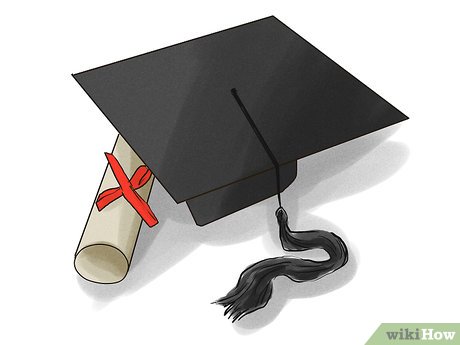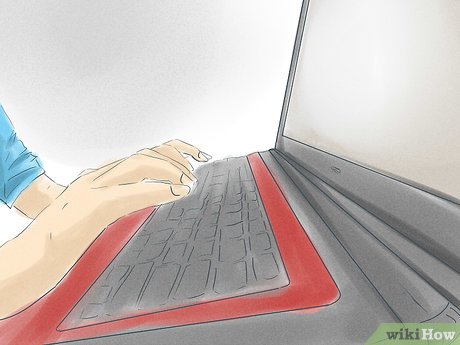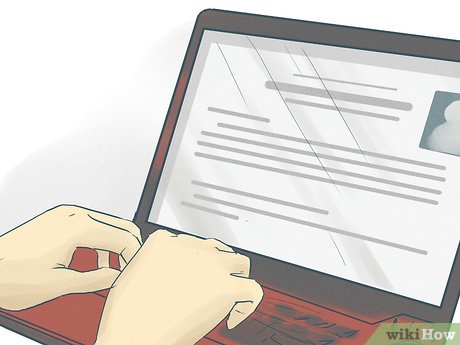How to Get an Undergraduate Research Position
Part 1 of 2:
Preparing Yourself and Searching For Options
-
 Determine your area(s) of research interest. What fascinates you and makes you want to learn more? Think about your major, your favorite classes, your hobbies, and your career goals. If you are having trouble narrowing down your interests, don't worry--that's part of what the undergraduate research experience is for. Brainstorm, make a list, and go with what seems most exciting and most promising. If you get into a research area and it ends up not being right for you, you can look into other research areas.
Determine your area(s) of research interest. What fascinates you and makes you want to learn more? Think about your major, your favorite classes, your hobbies, and your career goals. If you are having trouble narrowing down your interests, don't worry--that's part of what the undergraduate research experience is for. Brainstorm, make a list, and go with what seems most exciting and most promising. If you get into a research area and it ends up not being right for you, you can look into other research areas. -
 Enroll in a degree program in your area of interest at a college or university. If you want to join a professor's lab or research group, it's best to be a student at that professor's university.
Enroll in a degree program in your area of interest at a college or university. If you want to join a professor's lab or research group, it's best to be a student at that professor's university. -
 Make sure you've taken classes relevant to your area of research interest. It is not necessary to be an expert in all areas involved in the professor's research. Make sure you are familiar with the basics and have a foundational understanding of the research area. You will learn more once you join the lab or group.
Make sure you've taken classes relevant to your area of research interest. It is not necessary to be an expert in all areas involved in the professor's research. Make sure you are familiar with the basics and have a foundational understanding of the research area. You will learn more once you join the lab or group. -
 Write an outline of the research project you want to do. This step is optional. If you don't have a project in mind (which is to be expected from someone looking for first-time research experience), then the professor will find something for you to work on. This may mean that you'll be doing busy work or menial tasks (cleaning glassware, doing literature searches) before the professor finds a project you can help with. If you already have some specific project you want to research and it aligns with the projects going on, then the professor will be more interested in having you and your ideas around.
Write an outline of the research project you want to do. This step is optional. If you don't have a project in mind (which is to be expected from someone looking for first-time research experience), then the professor will find something for you to work on. This may mean that you'll be doing busy work or menial tasks (cleaning glassware, doing literature searches) before the professor finds a project you can help with. If you already have some specific project you want to research and it aligns with the projects going on, then the professor will be more interested in having you and your ideas around. -
 Locate professors at your university who do research that interests you. If you're in a class with a professor who works in your area of interest, ask about what research your professor does and how you can get involved. Browse through faculty webpages in whichever university departments you think are doing research that interests you. Use search engines and your university's website to find professors. Your university may have an undergraduate research opportunities program (often called UROP) that helps connect faculty to students and can give financial aid for research projects.
Locate professors at your university who do research that interests you. If you're in a class with a professor who works in your area of interest, ask about what research your professor does and how you can get involved. Browse through faculty webpages in whichever university departments you think are doing research that interests you. Use search engines and your university's website to find professors. Your university may have an undergraduate research opportunities program (often called UROP) that helps connect faculty to students and can give financial aid for research projects. -
 Locate other research institutions in your area of interest. Hospitals, companies, and other institutions also do research, and many have educational programs open to students. Search online and through your university to find opportunities like summer research jobs, lab volunteering, and student positions.
Locate other research institutions in your area of interest. Hospitals, companies, and other institutions also do research, and many have educational programs open to students. Search online and through your university to find opportunities like summer research jobs, lab volunteering, and student positions. -
 Prepare your resume. When you contact the professor, you will need to be able to present what experience you have. In your resume, list what classes you've taken related to the field of the professor's research, and what relevant skills and prior experience you may have. Don't worry if you don't have much in the way of skills and experience, because that's what you will learn while working with your professor and the research group. Demonstrate that you are thorough and reliable--necessary qualities for a good researcher.
Prepare your resume. When you contact the professor, you will need to be able to present what experience you have. In your resume, list what classes you've taken related to the field of the professor's research, and what relevant skills and prior experience you may have. Don't worry if you don't have much in the way of skills and experience, because that's what you will learn while working with your professor and the research group. Demonstrate that you are thorough and reliable--necessary qualities for a good researcher.
Part 2 of 2:
Applying for an Opportunity
-
 Contact the professor directly about your interest in his or her research, and/or enroll in a research program. Now that you've found professors who are doing research that you'd like to help with, you need to contact them. It's best to contact a number of professors, because not all of them will have positions available for you. Professors' email addresses and phone numbers should be publicly available on faculty webpages. If your university has an undergraduate research program, sign up for it and contact professors that way. If you sign up for a program, it is always a good idea to contact professors directly in addition to through the program.
Contact the professor directly about your interest in his or her research, and/or enroll in a research program. Now that you've found professors who are doing research that you'd like to help with, you need to contact them. It's best to contact a number of professors, because not all of them will have positions available for you. Professors' email addresses and phone numbers should be publicly available on faculty webpages. If your university has an undergraduate research program, sign up for it and contact professors that way. If you sign up for a program, it is always a good idea to contact professors directly in addition to through the program. -
 Ask to meet with the professor or researcher. In an email of phone call, explain who you are, why you are interested in joining the research work, and ask if there is a position for you. If the professor responds and says yes, then ask if the professor is available to meet with you to discuss how you can join the lab or research group and what you will do there.
Ask to meet with the professor or researcher. In an email of phone call, explain who you are, why you are interested in joining the research work, and ask if there is a position for you. If the professor responds and says yes, then ask if the professor is available to meet with you to discuss how you can join the lab or research group and what you will do there. -
 Read and become familiar with the professor's publications and background information about the research. Selected publications will often be listed on a professor's webpage. Alternatively, search engines like Google Scholar, software like EndNote, and online academic journal sites can help you find publications by searching the professor's name. This way, you will also be able to better discuss the lab or research work. When you meet with the professor, you want to demonstrate that you are interested enough to have looked into his or her work.
Read and become familiar with the professor's publications and background information about the research. Selected publications will often be listed on a professor's webpage. Alternatively, search engines like Google Scholar, software like EndNote, and online academic journal sites can help you find publications by searching the professor's name. This way, you will also be able to better discuss the lab or research work. When you meet with the professor, you want to demonstrate that you are interested enough to have looked into his or her work. -
 Prepare to explain the reasons for your interest in joining the research group. Know what you will tell the professor about what you have to offer, and what you want to gain from your time there, and why.
Prepare to explain the reasons for your interest in joining the research group. Know what you will tell the professor about what you have to offer, and what you want to gain from your time there, and why. -
 Prepare questions for the professor. When you meet the professor and discuss the current research projects, ask questions about anything you don't understand. This will give you a better idea of what goes on in the research group, what you have to gain from it, and it shows the professor that you are interested in actively learning more. Be sure to ask about things like the time commitment, the location, and other requirements for joining. And, if possible, try to get to know the professor personally--make sure you get along. It's important to have a friendly lab environment.
Prepare questions for the professor. When you meet the professor and discuss the current research projects, ask questions about anything you don't understand. This will give you a better idea of what goes on in the research group, what you have to gain from it, and it shows the professor that you are interested in actively learning more. Be sure to ask about things like the time commitment, the location, and other requirements for joining. And, if possible, try to get to know the professor personally--make sure you get along. It's important to have a friendly lab environment.
4.5 ★ | 2 Vote
You should read it
- How to Become a University Lecturer in the United Kingdom
- How to Become a College Professor
- How to Become a Law Professor
- Successful Chinese professor of surgical surgery implanted the first person on the corpse
- How to Become a Gender Studies Professor
- Send military chip technology to China, an American professor at risk of 'peeling off' 219 years












 How to Be an Etymologist
How to Be an Etymologist How to Become a Paraprofessional
How to Become a Paraprofessional How to Become a Psychology Professor
How to Become a Psychology Professor How to Become a College Professor
How to Become a College Professor How to Become a School Principal
How to Become a School Principal How to Be a Resident Assistant (RA)
How to Be a Resident Assistant (RA)